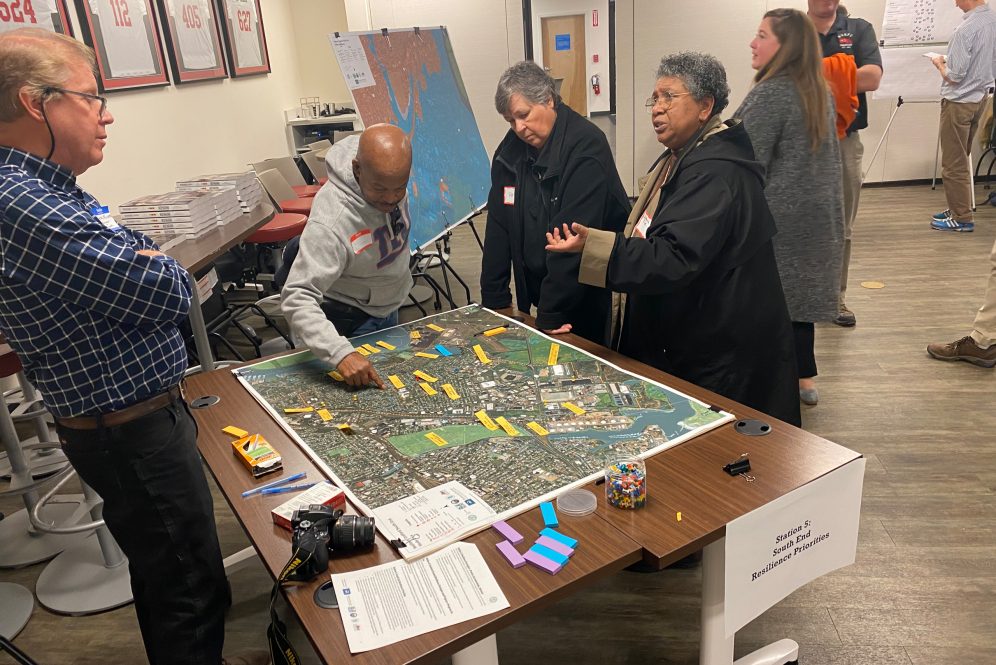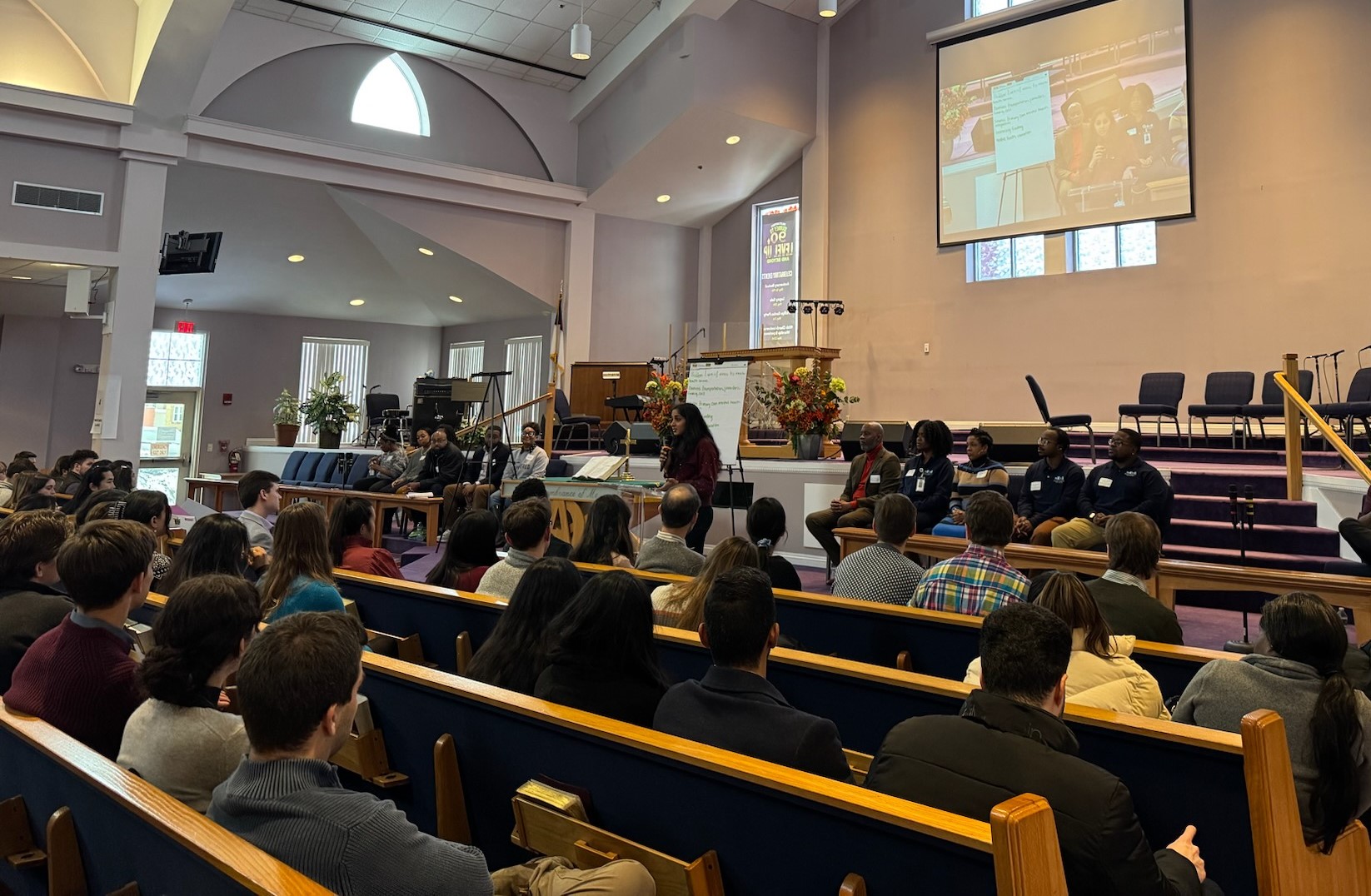A multi-disciplinary team of researchers at UConn has received a five-year $10 million grant from the Environmental Protection Agency (EPA) to lead a New England regional center focused on environmental justice.
On Wednesday, Oct. 30, UConn launched the Environmental Justice Thriving Community Technical Assistance Center (EJ-TCTAC). In close partnership with the EPA, the University will provide critical support to communities throughout New England.
The center will benefit cities, towns, and recognized Tribes throughout Connecticut, Massachusetts, Rhode Island, New Hampshire, Vermont, and Maine, offering assistance with navigating the federal grant process, engagement efforts, and identifying funding opportunities as the region embraces evolving environmental challenges.
“As Connecticut’s flagship university, UConn takes pride in service to our communities and helping to prepare them for the environmental challenges they face in the present and the future,” says Pamir Alpay, UConn Vice President for Research, Innovation, and Entrepreneurship. “With the EPA’s generous support, we are proud to extend our expertise and resourcefulness to support environmental justice throughout the cities, towns, and Tribes of New England.”
UConn won the grant through a competitive process among other universities in the region. UConn is well-positioned to lead the Center thanks to the expertise of faculty working in various areas related to environmental justice and existing connections with community organizations.
“Too often, communities with the most pressing environmental justice concerns have been left behind due to barriers in accessing federal funding,” says EPA New England Regional Administrator David W. Cash. “UConn’s technical assistance center is a game-changer for New England and will provide greater access to services to ensure overburdened and underserved communities and our Tribal nations can access historic investments to address generational environmental and health disparities.”
The center became operational with the launch of its website, environmental-justice.program.uconn.edu.
Carolyn A. Lin, professor in the Department of Communication, leads the team as the director of the EJ-TCTAC. The team includes associate directors Rupal Parekh, assistant professor in the School of Social Work; David Chacon-Hurtado, assistant research professor in the Department of Civil & Environmental Engineering; Diego Cerrai, assistant professor in the Department of Civil & Environmental Engineering; and Chris Newell, the director of Native American Cultural Programs as the tribal liaison.
“We have a very large group of talented faculty and researchers who have been working on environment-related projects and a lot of them have an environmental justice focus as well,” Lin says. “We hope to excel and do even more than is anticipated successfully.”
Environmental justice highlights that certain communities, typically lower-income and communities of color, are more likely to be at risk of suffering from environmental harms like pollution and vulnerability to climate change-related impacts like flooding.
“The need for environmental justice work is very high,” Lin says. “Climate change does not wait for us. The problems are here, and the consequences are obvious. They may not all manifest all at once, but people who live in those communities understand those consequences and they have suffered from them.”
The Center will support urban, rural, and Tribal communities throughout New England, helping organizations access funding from federal and state agencies to complete environmental justice projects.
Community organizations will be able to submit requests for free support with tasks like needs assessment, identifying funding sources, grant preparation, grant applications, and grant management. The team will engage partners directly and create digital informational resources, including webinars, podcasts and videos.
Through this technical assistance, the Center will support projects aimed at improving the quality of life and economic development of communities most affected by environmental injustices.
“My hope for the Center is that we can use our combined talent and resources, not to mention our passion for this line of work, to truly make a difference in the New England region across urban, rural, and tribal communities,” Lin says.
The Center is partnering with the EPA; the Institute for New England Native American Studies at the University of Massachusetts, Boston; the New England Environmental Finance Center at the University of Southern Maine; the New England Rural Health Association; Groundwork USA, and the Environmental Protection Network. These partnerships will help the team strengthen its connection with communities and better understand their needs.
“The only purpose of our Center is to serve the needs of communities across New England,” Lin says. “We have a very strong commitment to pulling together any kind of resources we can and building coalitions with communities and state governments and tribal nations. Because if you unite you are much bigger and much stronger in what you can do.”
For example, one environmental justice concern in Connecticut is transportation equity. Expanding public transit networks is not only good for the environment, as it cuts carbon emissions by reducing dependence on cars, but it also increases mobility for people who do not own a car.
“How do we improve our transportation system so that disadvantaged communities who don’t have good access to public transportation will be able to travel more efficiently in terms of time and cost to actually have better educational and economic opportunities,” asks Lin.
Other initiatives may tackle health disparities related to pollution exposure and toxic infrastructures, helping community organizations combat sources of pollution, develop educational resources, or connect community residents to healthcare services.
“Environmental issues are directly relevant to our health,” Lin says. “The air we breathe, the water we drink, and the soil beneath us all affect our well-being.”



